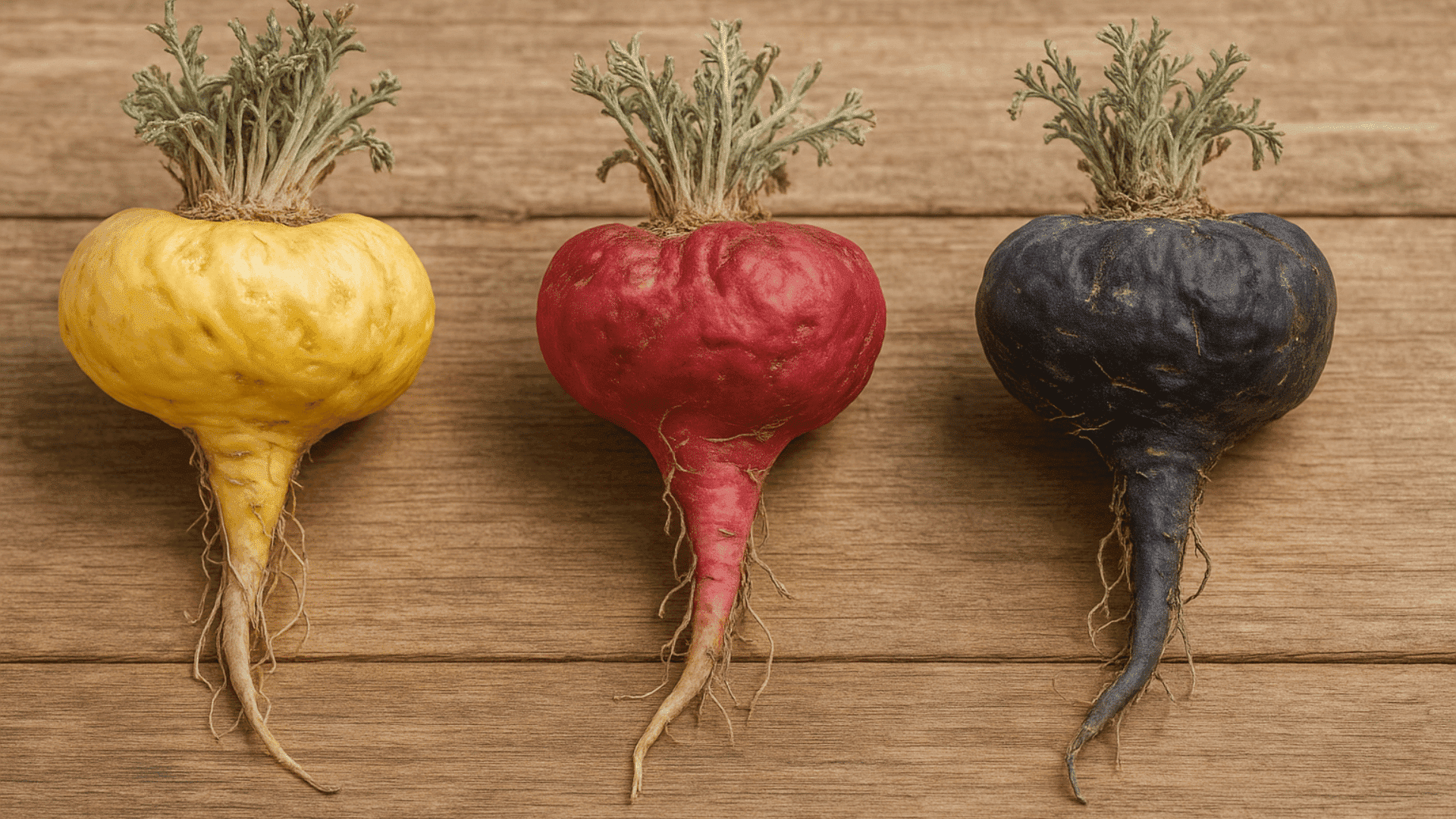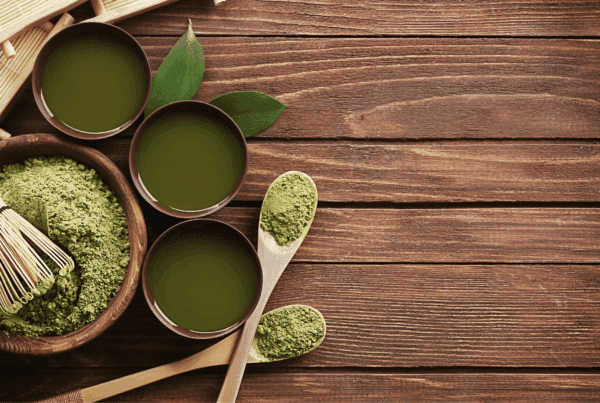What is poppy and why does everyone mention it?
Poppy (Lepidium meyenii) is a root plant originating from the Andes, which has already been used by the Peruvian peoples more than 2,000 years.
They also call her "Peruvian ginseng", as it is believed to help increase stamina, energy, fertility and stabilize hormones – in both men and women.
Today, poppy is most often used as an adaptogen, which means that it can help the body cope with stress - either physical or emotional - more easily.
It is especially popular with women due to its potential benefits in:
- irregular cycle,
- PMS symptoms,
- fatigue and lack of energy,
- hormonal imbalance (e.g. with PCOS or insulin resistance),
- libido problems.
Although there are many different types of maca, these are the most well-known yellow (gold), red and black, and each of them has its own specific benefits.
More on that later - but first, let me tell you how I discovered her and why I decided to give her a chance.
How did I get to the point?
At some point, I started hearing about poppy from all sides.
Instagram was full of "magical maca blend" smoothies, headlines about balancing hormones and energy, and every now and then an ad would pop up promising that your life would blossom after one teaspoon.
But all this immediately arouses a small amount of doubt for me - is this another "superfood" that looks good on the net, but does not bring anything concrete?
Then I started hearing about her from other sources.
Not from advertisements, but from the stories of real women - moms, aunts, friends who used it for months and said they felt more stable, with more energy, with a more regular cycle.
I have also heard a couple of stories where even gynecologists were amazed at the changes that occurred in women who used poppy seeds regularly.
Even before she became "Instagram famous", I already felt somewhere inside that it might be something worth trying.
As someone who has insulin resistance, PMS that can totally slow me down, and a cycle that doesn't really like to cooperate - I wasn't looking for a miracle, but for some gentle, natural support.
And poppy, at least in my case, really gave me something that I didn't expect.
Types of maca and their specific role
There are several types of maca, but three are the most famous - yellow (golden), red and black. Each of them has its own specific characteristics, and that's why it's important to know which one is for what.
Yellow (golden) poppy
This is the most common type of maca, and is most often used as a basic support for energy, resistance to stress and hormonal balance.
It is mild and suitable for everyday use, especially if you are just introducing poppy seeds into your routine.
Red poppy
It is often associated with women's health – especially supporting reproductive organs, bones and estrogen balance.
Some sources recommend it for PMS symptoms, painful periods and hormonal fluctuations in general.
I personally tried it, but I didn't use it regularly enough to be able to share a more concrete impression.
Black poppy
Black maca is the rarest and, according to research, has the strongest effect on endurance, focus and libido.
It is more often recommended for men, but also for women who have a problem with low energy or mental exhaustion.

My experience with a mix of three types of maca
My first choice was Just Superior poppy powder – Mix of yellow, red and black.
It was the best start for me, because I didn't know exactly which one I needed, and this combination offers a balanced effect of all three types. Also, let research shows that a mix of all three types of maca is best for regulating PMS symptoms, so I assumed it was the best option for my particular problem.
I used it regularly for several months, and the first thing I noticed was greater stability during the cycle - fewer sudden drops of energy, better concentration in the second half of the month, and the feeling that my body is still "listening" to me.
Of course, I didn't expect a miracle.
But I didn't take it randomly either - I tried to take it regularly, most often in the morning, with yogurt it was the best combination for me as far as the taste and solubility of the powder is concerned.
And for me, it was a support that I felt gradually, but surely.
How I used it and what I noticed
As I already mentioned, I liked it best to take maca in the morning - in yogurt.
I tried to combine it with porridges or smoothies, but yogurt turned out to be the best option: quick, simple and tasty.
I would add it, stir it and eat it without much thought.
I started to feel the first changes after a couple of days of regular use - they weren't revolutionary, but I knew something was working.
I no longer had that sudden drop in energy in the middle of the day, my PMS was milder, and I generally felt less internal tension.
The dose I used was approximately 4g per day, which is within the recommended amount.
Of course, every woman is different - not only in terms of cycle, but also in terms of build, metabolism, lifestyle, stress level.
That's why I often say in conversations with others: if after two weeks of regular use you don't notice anything at all, try increasing the dose by another 1-2 years.
Answers to the most common questions related to the use of maca
Is maca taken every day?
Yes - if you want it to have an effect, regularity is very important.
It is best taken in the morning, as it can have a mild stimulating effect (similar to coffee, but without the sudden spike).
Does it affect the cycle?
For me, it had an effect by making my cycle more predictable. It didn't solve everything, but I felt less chaos in my body before and during my period.
How soon can I expect results?
For most women, the first benefits come within 1-3 weeks.
I had it for about 2 weeks. If you are regular and do not notice anything, it is possible that you need a slightly higher dose.
Is it safe with insulin resistance or PCOS?
I use it precisely because of IR and irregular cycle, and I like it. Maca does not contain sugar, has a low glycemic index and is often recommended as an adaptogen for hormonal imbalances. Of course, it's always wise to check with an endocrinologist if you're unsure.
Does it raise blood pressure?
It didn't have that effect on me. If you're generally sensitive to stimulants (like coffee), it's best not to take too close to the evening.
How to include maca in the diet in a natural way
There are many ways to add poppy seeds to your daily routine - but what I've learned is that it has to fit into the rhythm of your day, otherwise you'll give up very quickly.
I used it the longest and most consistently when I just mixed it with yogurt - simple, quick, and almost every day. No blending, no special preparation, no excuses.
However, if you like to play with the ingredients a little more, here are a few variations I've heard from other women:
1. Maca latte
Heat almond or oat milk (do not boil), add your appropriate dose of maca, a little cinnamon and a pinch of cocoa powder. If desired, sweeten with honey or stevia. A warm, comforting drink - ideal for a peaceful start to the day.
2. All-in-one smoothies
If you also use other superfoods (spirulina, acai, MSM...), you can put them all in one smoothie and solve more things in one go. Just make sure the flavors don't become too "earthy" - poppy seeds have a strong flavor, so they go well with banana, blueberry, plant-based milk and a spoonful of nut butter.
3. Porridge with poppy seeds
If you like breakfast in the form of fruit porridge, you can add poppy seeds to your favorite oatmeal or buckwheat porridge. It goes well with cinnamon, honey and dried fruit. But to be honest - for me it already required more time than I have in the morning.
Therefore, if your day is chaotic, don't look for a perfect ritual - look for something that is easy for you to repeat every day. For me it was plain yogurt.
Conclusion
I don't think poppy seeds solve everything. But if your body has been quietly asking for support for some time - no aggressive supplements, no big promises - it might be worth a try.
It didn't bring me an overnight miracle, but it did bring a quiet change: more energy, less internal tension and the feeling that I'm not completely at the mercy of hormones.
Maybe you like it as a latte in the morning, maybe as an addition to a smoothie, and maybe - like me - just in yogurt while you're getting dressed and thinking about what you're going to do for the whole day. There is no wrong way, it's just important to keep it simple enough for you to be regular.
If this story meant something to you, and if you are thinking of introducing poppy seeds into your routine, you can find all the types that I used and recommend at the links in the text. These are Just Superior macs, verified clean, organic and carefully processed - and they were a good companion for me through hormones.
And finally, just one reminder:
The point is not to know everything right away and do it perfectly. The point is to listen to yourself. And sometimes, just in that listening, you come across something that really pleases you.









